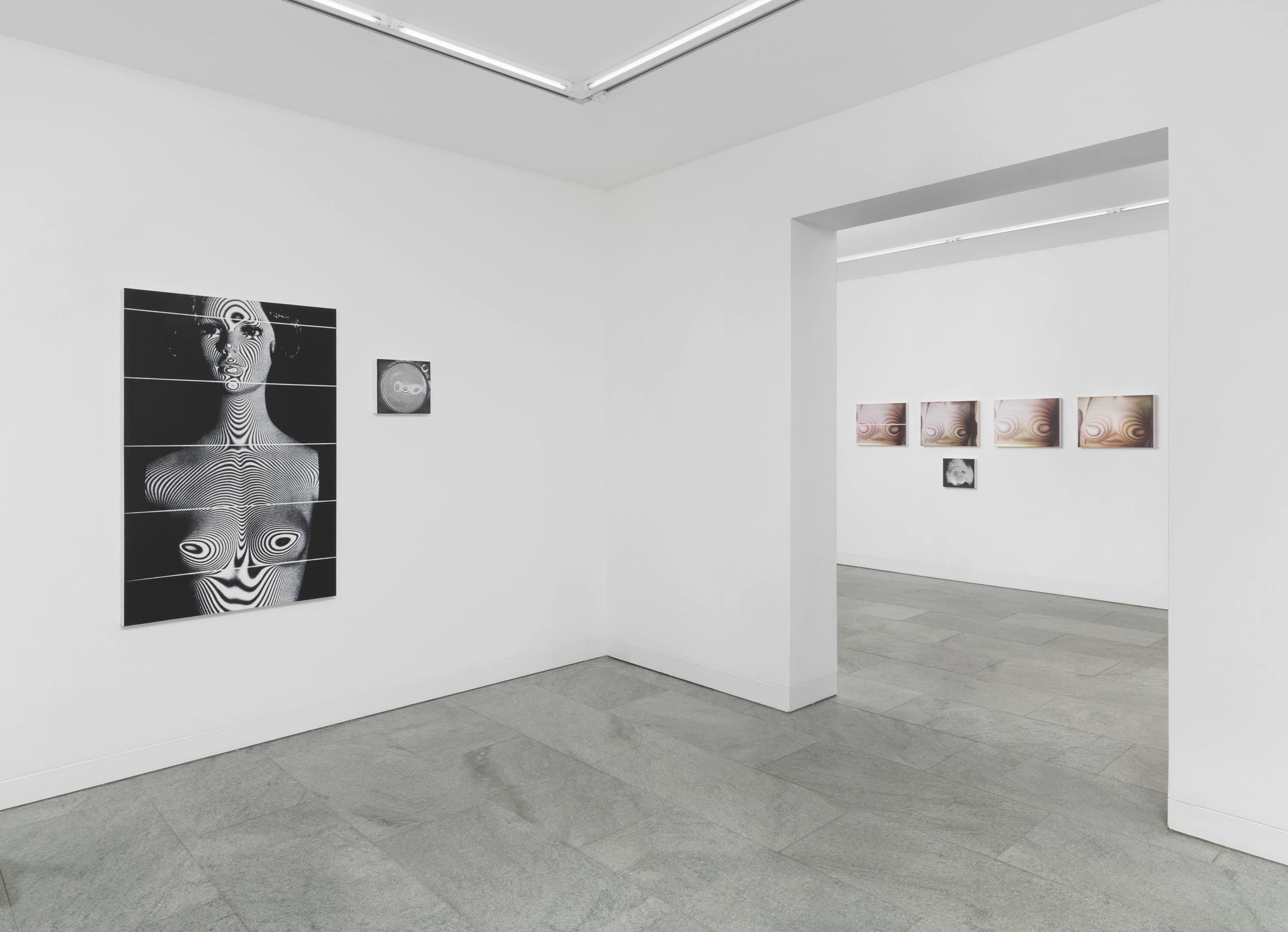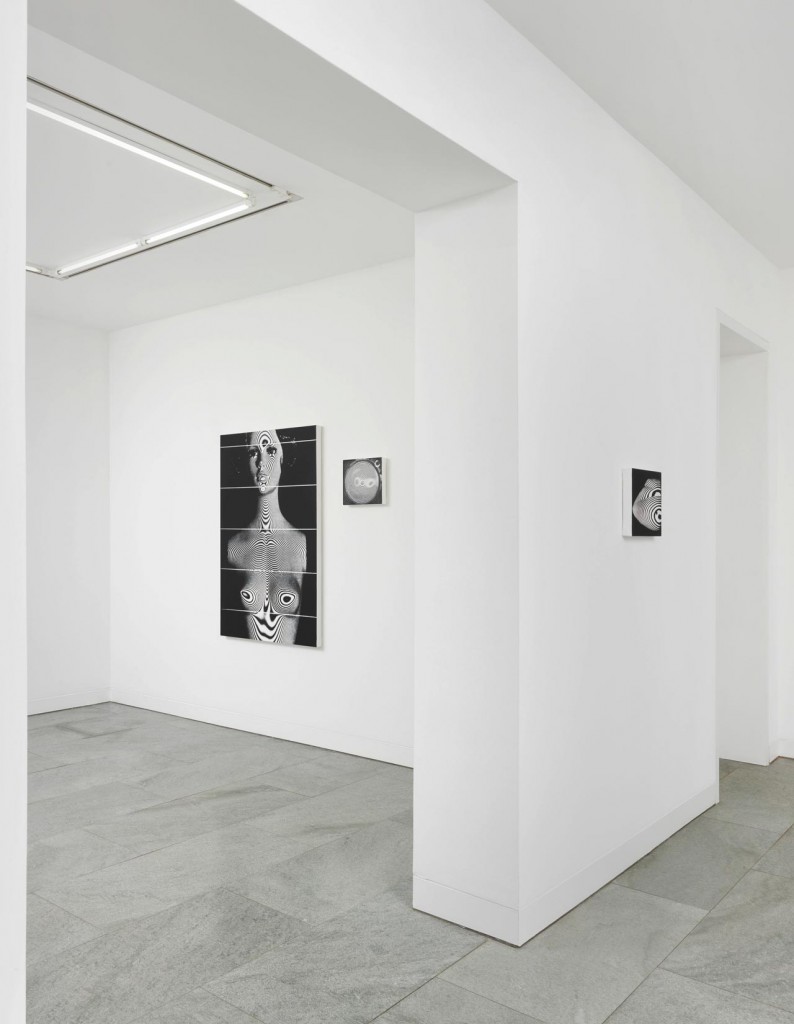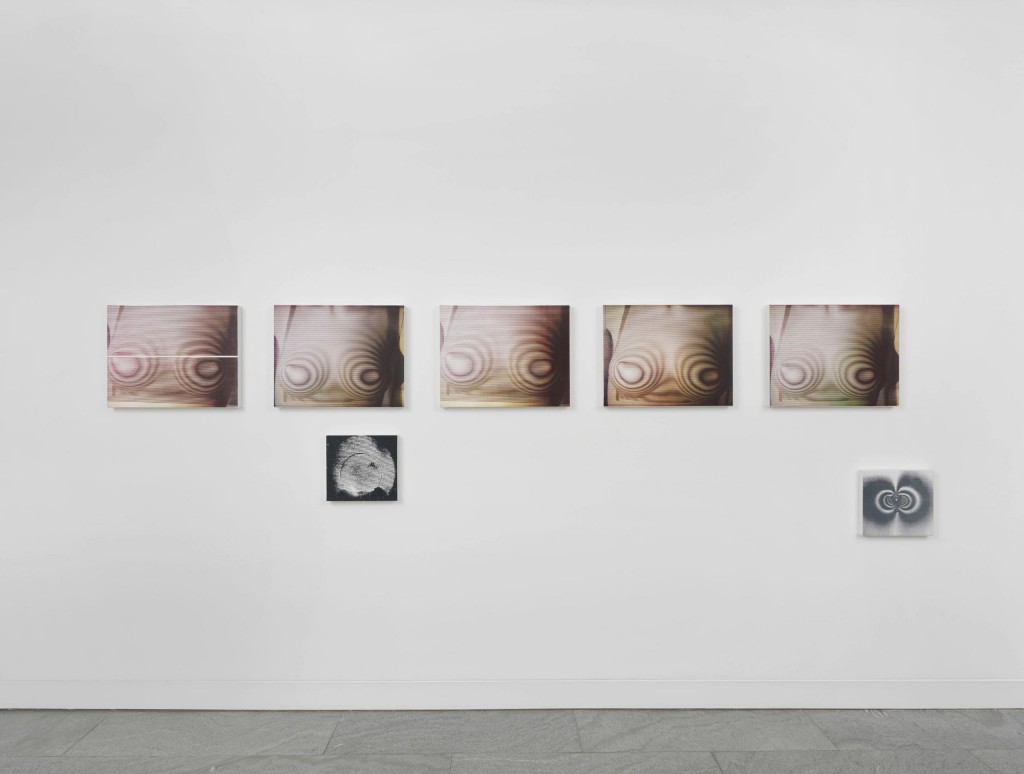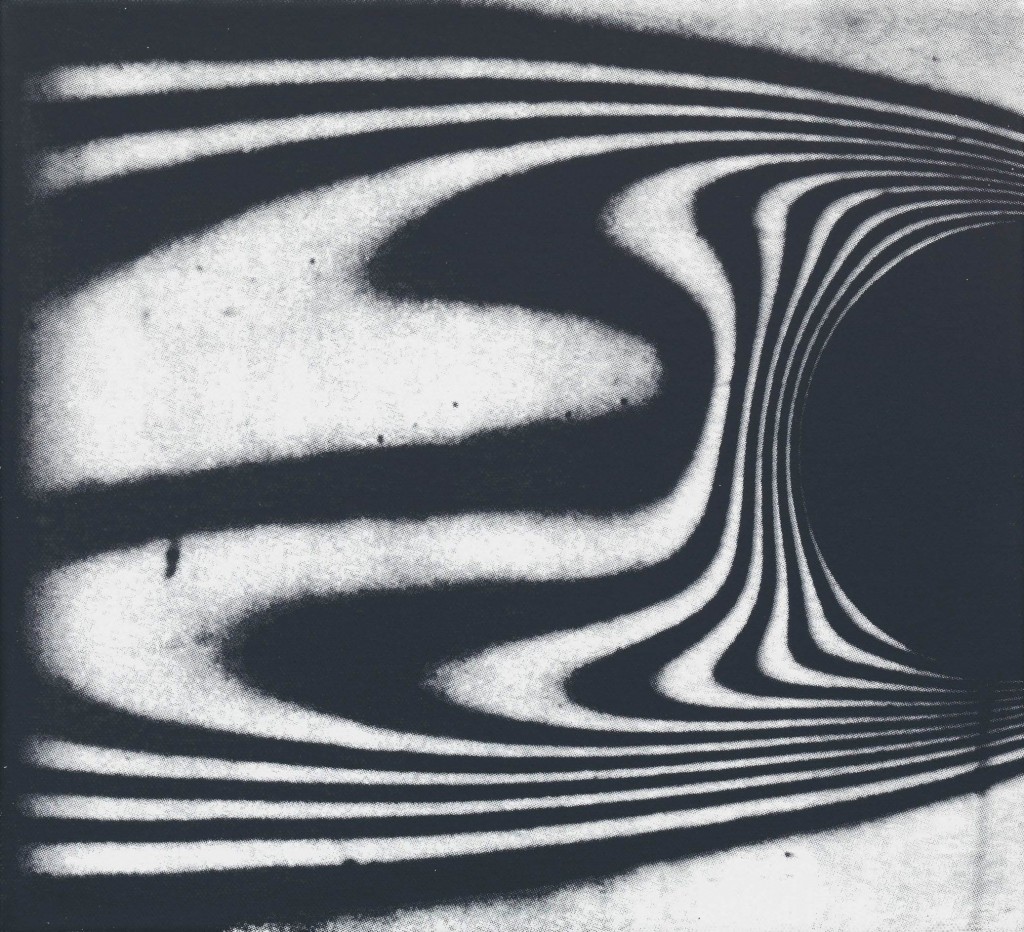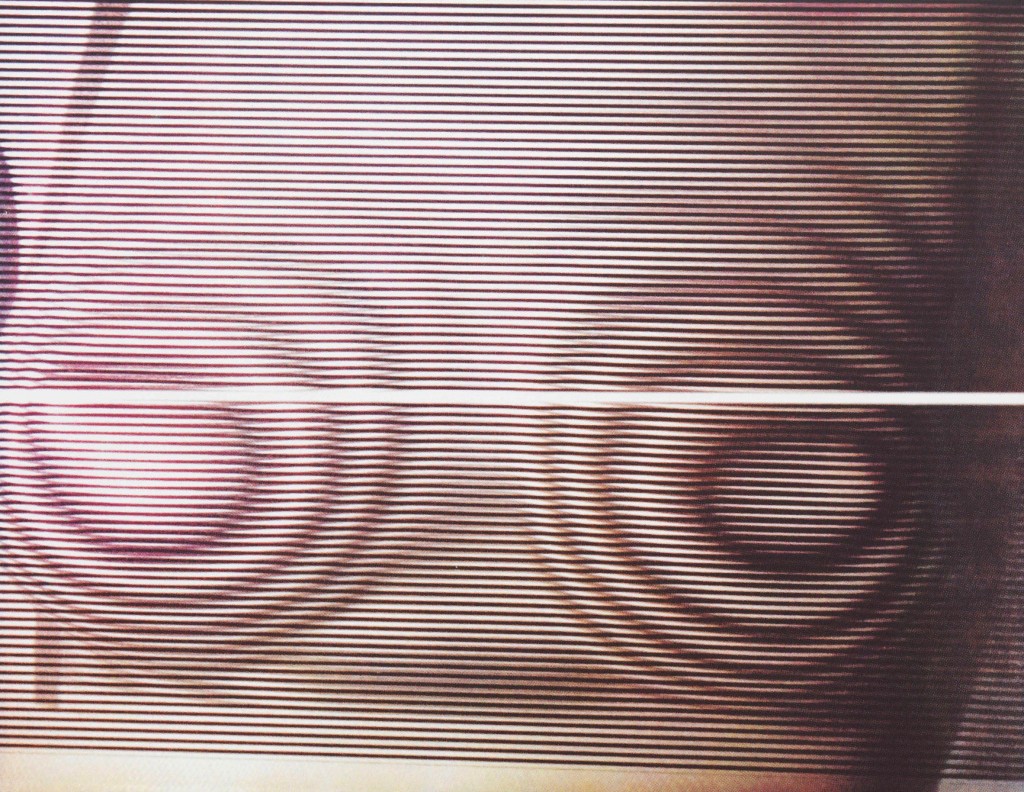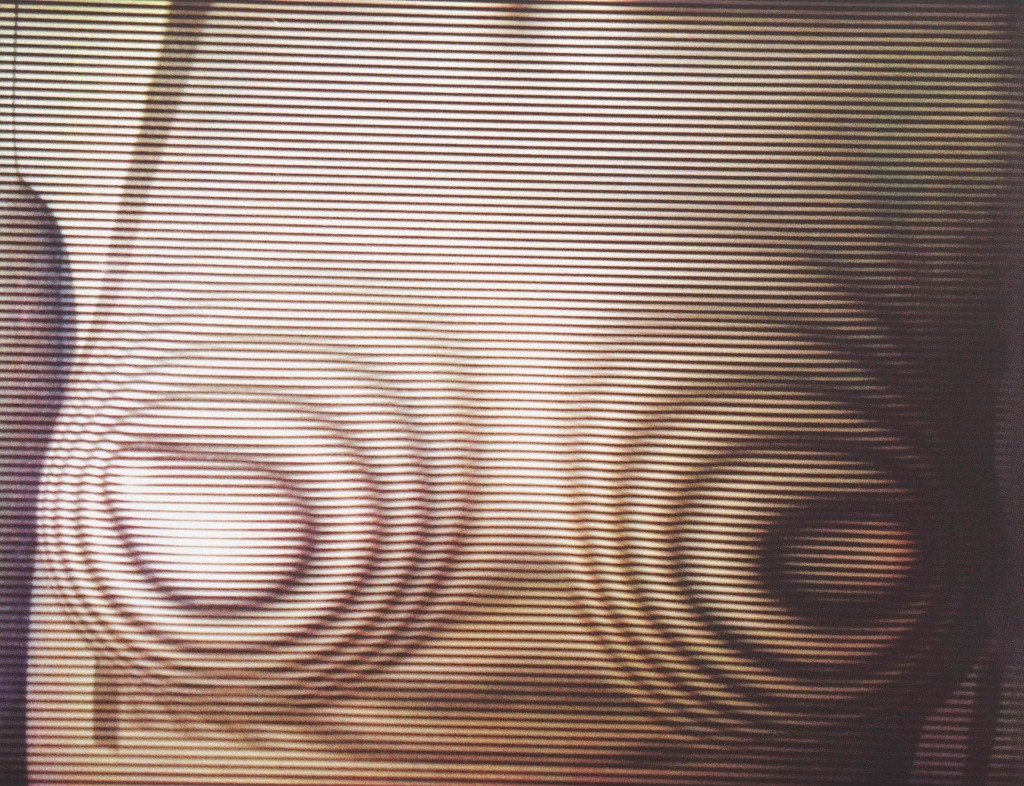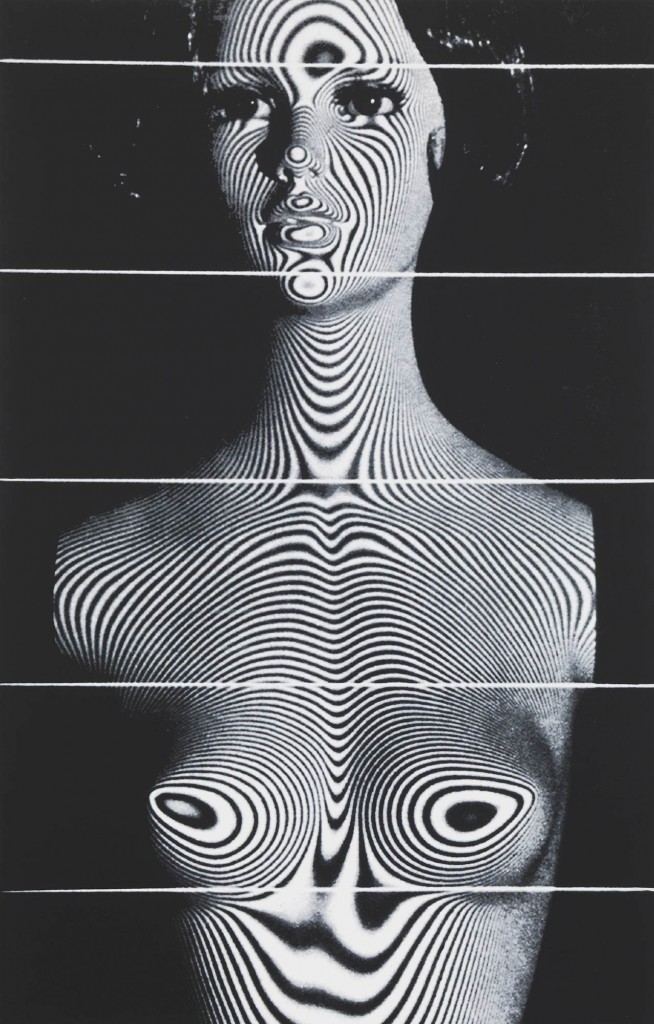Lars Dittrich and André Schlechtriem are proud to announce the second solo exhibition at the gallery in Berlin by the American artist Robert Lazzarini. Opening November 1st and running through January 10th, Das Unheimliche marks the first painting presentation by Lazzarini and explores the three-dimensional mappings of Shadow Moiré Topography, a technique developed around the inception of commercial scanning technology. Using the female mannequin as his main subject, and combining appropriated and constructed imagery, the artist creates moiré patterns on objects, expanding upon his interest in a physical response to the art object.
First developed in the late 1960s, Shadow Moiré techniques are used to analyze three-dimensional objects for measurement and defects. Through the use of a Ronchi screen, a reference grating, alternating patterns of light and shadow are projected onto complex three-dimensional surfaces. Distortions in the patterns then allow for a non-contact yet detailed observation of topographic contours otherwise undetectable to the naked eye or even enhanced photographic capture.
Congruent with the Op Art of the 1960s, which transferred two-dimensional moiré patterns onto the canvas in pursuit of an optical phenomenology—a kind of visceral vision—Lazzarini’s paintings intersperse moments of visual dissonance with reprieve.
The use of Shadow Moiré techniques not only anticipated the digital contour mapping used in most contemporary scanning technology—both 2D and 3D—but also echo Surrealist photography’s erstwhile attraction to the shadows and doublings that the movement’s adherents believed “convulsed” reality into a form of signification.
With Lazzarini’s paintings, the notion of the uncanny speaks to this doubling, to the unsettling repetitions that lie deep at the heart of the Surrealist aesthetic. In this, the Ronchi screen that generates physical maps of surfaces figures as both a technological and psychological mediation, at once revealing and repressing optical and cognitive content.
Robert Lazzarini currently lives and works in New York and has exhibited with major institutions including the Modern Art Museum of Fort Worth, Texas; the Whitney Museum of American Art, New York; the Virginia Museum of Fine Arts; the Aldrich Museum, Connecticut; and the Taipei Museum of Contemporary Art. His work is included in the permanent collections of the Whitney Museum of American Art, New York; the Hirschhorn Museum and Sculpture Garden, Washington, D.C.; and the Walker Art Center, Minneapolis, among others.
DITTRICH & SCHLECHTRIEM will publish a catalogue on occasion of the exhibition.
Please contact Owen Reynolds Clements at owen@dittrich-schlechtriem.com with press requests or for further information.
Lars Dittrich und André Schlechtriem freuen sich, die zweite Soloausstellung des amerikanischen Künstlers Robert Lazzarini in ihrer Berliner Galerie zu präsentieren. Die Schau Das Unheimliche, die am 1. November eröffnet und bis zum 10. Januar zu sehen sein wird, ist die erste Präsentation von Lazzarinis Gemälden, in denen er sich mit der Vermessung dreidimensionaler Oberflächen mittels der Moiré-Schatten-Topografie, einer in der Frühzeit der kommerziellen Scantechnologie entwickelten Technik, auseinandersetzt. Eine weibliche Schaufensterpuppe in Verbindung mit selbst hergestelltem sowie auch mit angeeignetem Bildmaterial dient als Hauptfigur in dieser Erprobung einer physischen Reaktion auf das Kunstwerk, für die der Künstler Moirémuster auf Objekte wirft.
Moiré-Schatten-Techniken, die zuerst in den späten 1960ern entwickelt wurden, dienen der Analyse von dreidimensionalen Gegenständen zu Vermessungs- und Mängelprüfungszwecken. Mittels eines Ronchi-Gitters, eines Referenzrasters, werden regelmäßige Licht-Schatten-Muster auf komplexe dreidimensionale Oberflächen projiziert. Verzerrungen dieser Muster ermöglichen dann eine genaue Wahrnehmung topografischer Konturen, die für das bloße Auge oder sogar mit Hilfe fortgeschrittener Fototechnik nicht erkennbar sind. Das Objekt bleibt dabei unberührt.
Ähnlich wie in der Op-Art der sechziger Jahre, die auf der Suche nach einer optischen Phänomenologie – einer Art verkörpertem Sehen – zweidimensionale Moirémuster auf die Leinwand übertrug, wechseln in Lazzarinis Gemälden Momente visueller Dissonanz mit Ruhepunkten.
Der Einsatz von Schatten-Moiré-Techniken nahm nicht nur die digitale Konturenerfassung vorweg, die in heutiger Scantechnologie – in zwei wie drei Dimensionen – breite Verwendung findet, sondern erinnert auch an die surrealistische Fotografie mit ihrer Neigung zu Schatten und Verdopplungen, die, wie ihre Vertreter glaubten, die Wirklichkeit schockhaft zu so etwas wie einer Aussage verzerrten.
In Lazzarinis Malerei verweist der Aspekt des Unheimlichen auf diese Verdopplung, auf die verstörenden Wiederholungen, die den inneren Kern der surrealistischen Ästhetik ausmachen. Dabei erscheint das Ronchi-Gitter, das physische Karten von Oberflächen generiert, als eine sowohl technologische als auch psychologische Vermittlungsinstanz, die bildliche und gedankliche Inhalte offenbart und zugleich verdrängt.
Robert Lazzarini lebt und arbeitet derzeit in New York. Seine Arbeiten wurden in wichtigen Institutionen gezeigt, etwa im Modern Art Museum in Fort Worth (Texas), im Whitney Museum of American Art in New York, im Virginia Museum of Fine Arts, im Aldrich Museum (Connecticut) und im Taipei Museum of Contemporary Art. Sein Werk ist in den ständigen Sammlungen des Whitney Museum of American Art in New York, des Hirschhorn Museum and Sculpture Garden in Washington, D.C., des Walker Art Center in Minneapolis und anderer Museen vertreten.
Anlässlich der Ausstellung erscheint bei DITTRICH & SCHLECHTRIEM ein Katalog.
Für Presseanfragen und weitere Informationen wenden Sie sich bitte an Owen Reynolds Clements: owen@dittrich-schlechtriem.com
